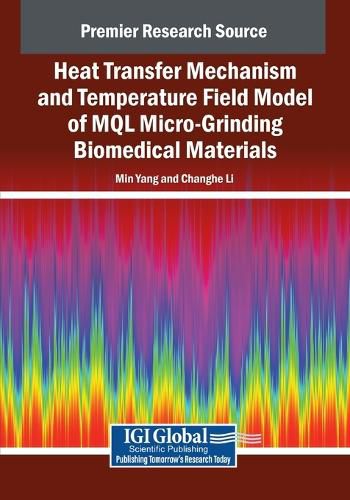Readings Newsletter
Become a Readings Member to make your shopping experience even easier.
Sign in or sign up for free!
You’re not far away from qualifying for FREE standard shipping within Australia
You’ve qualified for FREE standard shipping within Australia
The cart is loading…






This title is printed to order. This book may have been self-published. If so, we cannot guarantee the quality of the content. In the main most books will have gone through the editing process however some may not. We therefore suggest that you be aware of this before ordering this book. If in doubt check either the author or publisher’s details as we are unable to accept any returns unless they are faulty. Please contact us if you have any questions.
In the field of biomedical engineering, the micro-grinding of materials is critical for precision and biocompatibility. Understanding the heat transfer mechanisms and temperature field models during minimum quantity lubrication (MQL) micro-grinding is essential for optimizing performance and ensuring the integrity of sensitive biomedical materials. Heat generation can directly impact the quality and precision of the grinding process, affecting tool wear, surface finish, and material properties. A comprehensive temperature field model is necessary for effective process control, practical solutions in biomedical manufacturing, and improved innovations in material science. Heat Transfer Mechanism and Temperature Field Model of MQL Micro-Grinding Biomedical Materials provides theoretical guidance and technical support for predicting biomedical materials grinding temperatures and improving surface integrity. It conducts an experimental evaluation on the mechanical behavior of ductile removal and micro grinding temperature field in nanofluid minimum quantity lubrication (MQL). This book covers topics such as mechanical engineering, ductile removal, and nanotechnology, and is a useful resource for mechanical and material engineers, scientists, business owners, medical professionals, academicians, and researchers.
$9.00 standard shipping within Australia
FREE standard shipping within Australia for orders over $100.00
Express & International shipping calculated at checkout
Stock availability can be subject to change without notice. We recommend calling the shop or contacting our online team to check availability of low stock items. Please see our Shopping Online page for more details.
This title is printed to order. This book may have been self-published. If so, we cannot guarantee the quality of the content. In the main most books will have gone through the editing process however some may not. We therefore suggest that you be aware of this before ordering this book. If in doubt check either the author or publisher’s details as we are unable to accept any returns unless they are faulty. Please contact us if you have any questions.
In the field of biomedical engineering, the micro-grinding of materials is critical for precision and biocompatibility. Understanding the heat transfer mechanisms and temperature field models during minimum quantity lubrication (MQL) micro-grinding is essential for optimizing performance and ensuring the integrity of sensitive biomedical materials. Heat generation can directly impact the quality and precision of the grinding process, affecting tool wear, surface finish, and material properties. A comprehensive temperature field model is necessary for effective process control, practical solutions in biomedical manufacturing, and improved innovations in material science. Heat Transfer Mechanism and Temperature Field Model of MQL Micro-Grinding Biomedical Materials provides theoretical guidance and technical support for predicting biomedical materials grinding temperatures and improving surface integrity. It conducts an experimental evaluation on the mechanical behavior of ductile removal and micro grinding temperature field in nanofluid minimum quantity lubrication (MQL). This book covers topics such as mechanical engineering, ductile removal, and nanotechnology, and is a useful resource for mechanical and material engineers, scientists, business owners, medical professionals, academicians, and researchers.